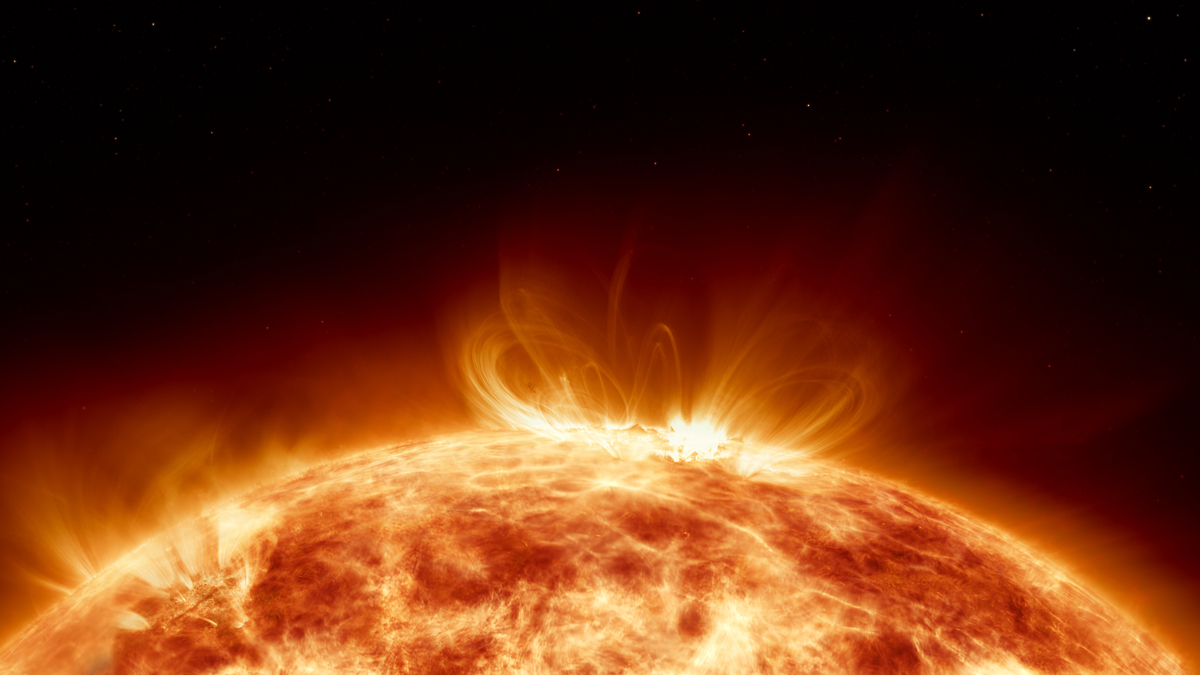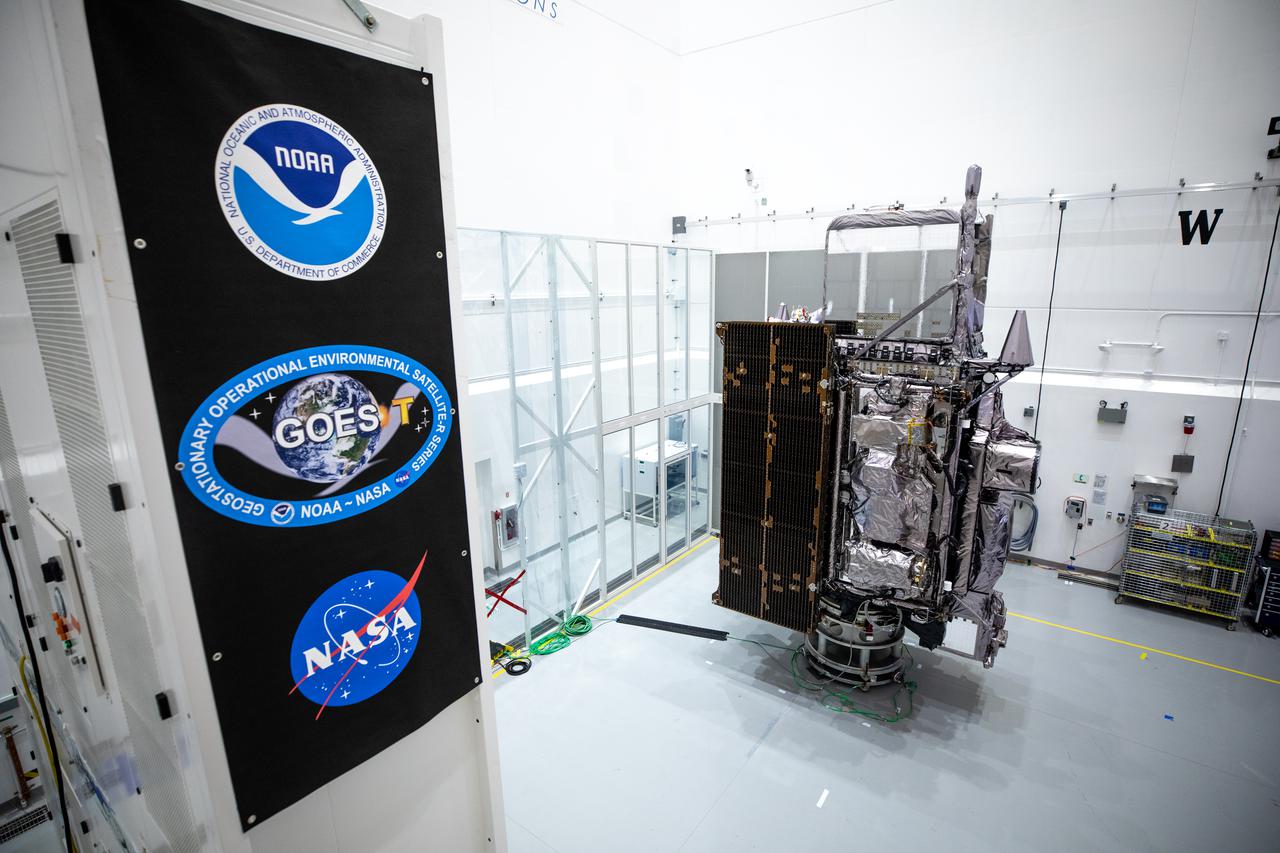
On May 10, 2024, the Gannon storm crashed into Earth’s atmosphere. The first severe geomagnetic storm in over twenty years, Gannon had cascading effects: the thermosphere heated and expanded, increasing drag on satellites, requiring greater power and maneuvering to maintain their orbit. On the ground, several high-voltage lines tripped, transformers overheated, and GPS-reliant systems were skewed.
And in Denver, Colorado, the inaugural Space Weather Tabletop Exercise from the Johns Hopkins Applied Physics Laboratory (APL) was playing out a fictional—but strangely similar—event. The exercise was a test of interagency coordination and communication between a wide range of sectors, from satellite to radio to railways. As leaders from federal agencies and over 40 local and regional entities emerged from the tabletop exercise, they found themselves faced with the Gannon storm. While the effects of the geomagnetic storm remained somewhat manageable, it served as an eerie reminder that a massive solar flare could come hurtling towards Earth at any moment.
And as more infrastructure is moved into space and onto vulnerable satellite systems, geomagnetic storms like Gannon could have crippling consequences.
Solar Flares, Radiation and CMEs: The Many Dangers of Space Weather
Space weather is monitored by several satellite systems, including NOAA’s GOES satellites, the DSCOVR satellites, and the upcoming Space Weather Follow On. Instruments onboard these satellites, such as the coronograph, collect data on solar activity which is used to forecast and track solar flares, radiation, and coronal mass ejections (CMEs).
The most robust and disruptive result of space weather is geomagnetic storms, which can change the density of the atmosphere.
The most robust and disruptive result of space weather is geomagnetic storms, which can change the density of the atmosphere. As the atmosphere heats up, it becomes more dense and begins to expand. The satellites in lower orbits then experience increased drag, slowing them down and dragging them towards the surface. In the past, Starlink satellites have fallen to the Earth during geomagnetic storms, raising serious concerns for any satellite operator hoping to build out a mega-constellation in LEO.
To combat the drag produced by a geomagnetic storm, operators must increase power and burn fuel. “They have to burn fuel to keep their level,” said Shawn Dahl, a service coordinator at NOAA’s Space Weather Prediction Center. During the storm in May of 2024, “around 5,000 satellites were burning fuel and trying to raise their orbits.”
This type of mass satellite migration can have dangerous implications, especially for location tracking and collision avoidance. During a mass satellite migration, “nobody knows where these satellites are,” Dahl said. “They’re from different sectors, different business, different countries.” LEO is already a crowded and congested space, but add in a mass satellite movement due to an unexpected storm and you have a chaotic environment.
“Low-Earth orbit drag is really the dominant problem,” said Benjamin McCrossan, founder of Ensemble Space Labs, a space weather startup working to provide actionable space weather intelligence to satellite operators. “The drag can cause very drastic altitude loss, particularly as the orbital congestion increases. People really can’t propagate their orbits well and detect where other objects are when they don’t account for the space environment conditions.”
McCrossan emphasized the magnitude of the LEO problem for operators, where a single unexpected impact could have cascading effects across an entire constellation. No other space weather event “could really have the same catastrophic impact as these major geomagnetic storms for the crowded LEO,” he said.
But other satellite systems do have their own concerns, even if they are not nearly as pressing as drag in LEO. “Different satellites have different vulnerabilities,” McCrossan said. “Some of the radiation storms at GEO can reduce satellite lifetime and cause anomalies.” A lot of new equipment is more susceptible to radiation in the space environment, particularly in GEO where radiation is much more severe.
“A lot of emerging satellites, because of the need for compute, are using more traditional, non-rad-hardened equipment,” McCrossan said. “They are going to be much more susceptible to the radiation environment.”
“GEO is usually really solid,” Dahl said. “LEO runs a much higher risk. They need to be space weather smarter.”
And the effects of geomagnetic storms are not limited to satellite systems; they can also cause failures in the power grid, due to burnt up transponders, tripped power lines, and high levels of induced current. And a failure in LEO could cause cascading failures down the line to a variety of technologies and industries that increasingly rely on a dependable satcom connection. But even as space becomes home to critical communication and positioning infrastructure, many of these sectors and technologies remain siloed from each other, with few if any lines of efficient communication.
Because of this, building systems for early advanced warning is one of the major priorities of space weather monitoring systems.
 The GOES‑T satellite before launch in 2022. Now in orbit, it monitors the Pacific Ocean and the west half of the United States, as well as approaching space weather hazards. (Source: NASA / Ben Smegelsky)
The GOES‑T satellite before launch in 2022. Now in orbit, it monitors the Pacific Ocean and the west half of the United States, as well as approaching space weather hazards. (Source: NASA / Ben Smegelsky)
Findings from the Johns Hopkins APL Tabletop Exercise
The Johns Hopkins APL Space Weather Tabletop Exercise brought together leaders across federal, state and local governments, as well as scientists, policymakers and industry leaders. The exercise was intended to imitate a real-life extreme space weather event in order to address the problem of communication between groups with different priorities, understanding, and language.
Dipak Srinivasan, a space formulation manager at the Johns Hopkins APL, emphasized the issue of “matching language.” At the end of the day, the exercise sought to answer one major question: How do space weather forecasters inform and work with the people who are actively dealing with the results of space weather on the ground?
The exercise was designed to mimic an extreme—but plausible—space weather scenario. “We wanted it to be something that was bad, but realistic,” Srinivasan explained. “Something that we could plan for, so that we could see the impacts across the board.”
For this exercise, the extreme space weather event was two back-to-back coronal mass ejections (CMEs). The exercise itself was divided into a series of four modules (designated as days) that were undertaken back-to-back over the course of two days:
- Day 1: federal-level participants from organizations such as FEMA and the DoD were brought in and made aware that a solar event was on the horizon. Subsequently, systems were hit by a solar flare, resulting in comms outages and the loss of a handful of spacecraft.
- Day 2: the second solar flare hit. With the atmosphere already flooded from the first solar flare, systems quickly began to disintegrate. This is when participants from regional and local entities were brought into the exercise. More than 40 agencies spanning different levels of government participated.
- Day 3: participants focused on tactical responses on the ground, including shutting down sections of the power grid.
- Day 4: recovery. Systems were brought back up, while some space systems were designated as irrecoverable.
In the Johns Hopkins APL’s After Action Report, one of the most pressing priorities was for better communication to operators and others that are “downwind” of space weather events. The need to create meaningful and understandable space weather notifications that reliably communicate the potential impact on critical infrastructure is one of the most pressing concerns for members of the space weather community.
The need to create meaningful space weather notifications that reliably communicate the potential impact on critical infrastructure is one of the most pressing concerns.
But perhaps just as important is the need to know what to do in the case of a geomagnetic storm.
What To Do in Case of Geomagnetic Storm
Preparing for space weather begins in the manufacturing stage. “There are things you can do in constructing and operating a spacecraft that can increase the resistance to space weather events,” Srinivasan said. This includes design, higher-grade materials, and redundancy. SpaceX’s Starlink, for example, is built to be highly redundant and easy to replace—lose a few satellites, and the constellation as a whole still functions, and the losses are cheap and easy to replace.
But not many satellite manufacturers and operators have an effective space weather strategy. And across the satellite industry, operating procedures remain fragmented. “A lot of the more mature satellite providers have their own in-house tools and operating procedures that they’ve built,” McCrossan said. “A lot of the more emerging constellations and satellite operators don’t have those sophisticated processes in place.”
This is where McCrossan’s company, Ensemble Space Labs, comes in. By building tools and procedures to identify and react to geomagnetic storms, operators across the industry can have a productive response to a severe space weather event.
To connect the dots between a forecast and actual operator actions, McCrossan proposed a variety of different responses to a geomagnetic storm.
“For something like a radiation storm, or a solar particle event, we can forecast when these are occurring and roughly when they’ll arrive,” McCrossan said. “With that information, you can do a cost-benefit analysis based on the radiation that the satellite will be exposed to—should they continue the operations as planned, or should they potentially secure non-critical systems.”
With few robust space weather plans currently in place, there are opportunities to build more redundant systems and to be less exposed.
With few robust space weather plans currently in place, “there’s a lot of opportunities to build more elaborate concepts of operations, to have redundant systems and to be less exposed,” McCrossan said. For example, operators could put a satellite in a ‘safe mode,’ which transfers critical systems and data elsewhere.
This is an opportunity to build protocols and best practices that will secure infrastructure that has become increasingly critical to the modern world. “It’s becoming more and more critical for space operations across the board, especially because of the super low altitudes, crowded LEO, and non-radiation proofed electronics,” McCrossan said. “Nobody has super sophisticated processes in space to protect all the stuff we’ve put up there.”
Explore More:
Averting a $1T Disaster: NOAA’s New GOES-U Will Forecast Major Solar Weather
Europe’s $6B Metop-SG Weather Satellite Program Debuts in Orbit, Will Join US NOAA in Joint Polar Satellite System
Podcast: Hyperspectral Imagery, 1,000 Mbps from Space, and a Health Monitor for the Earth
